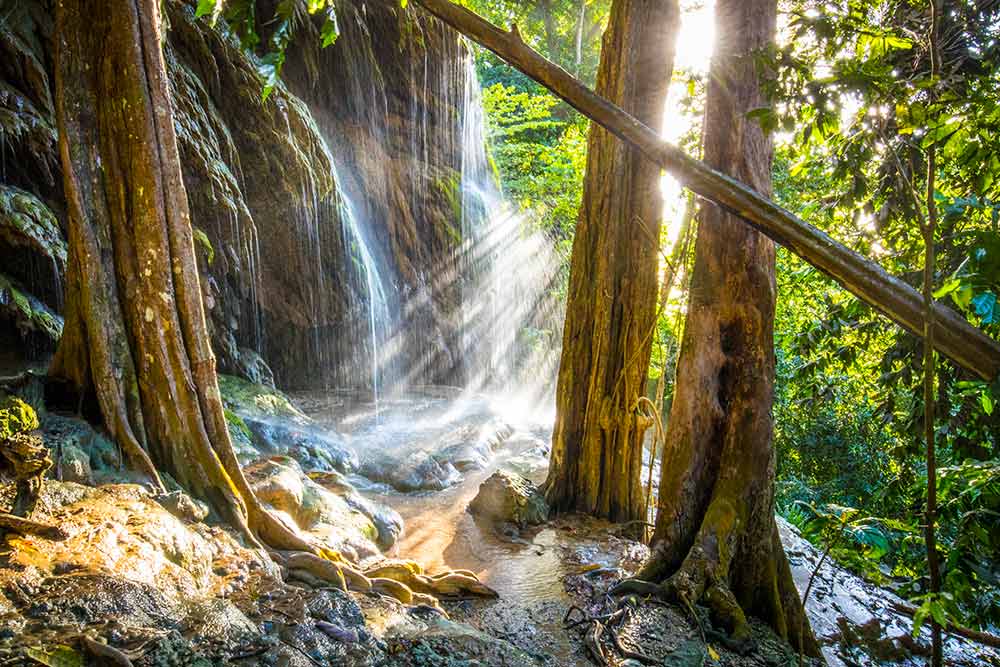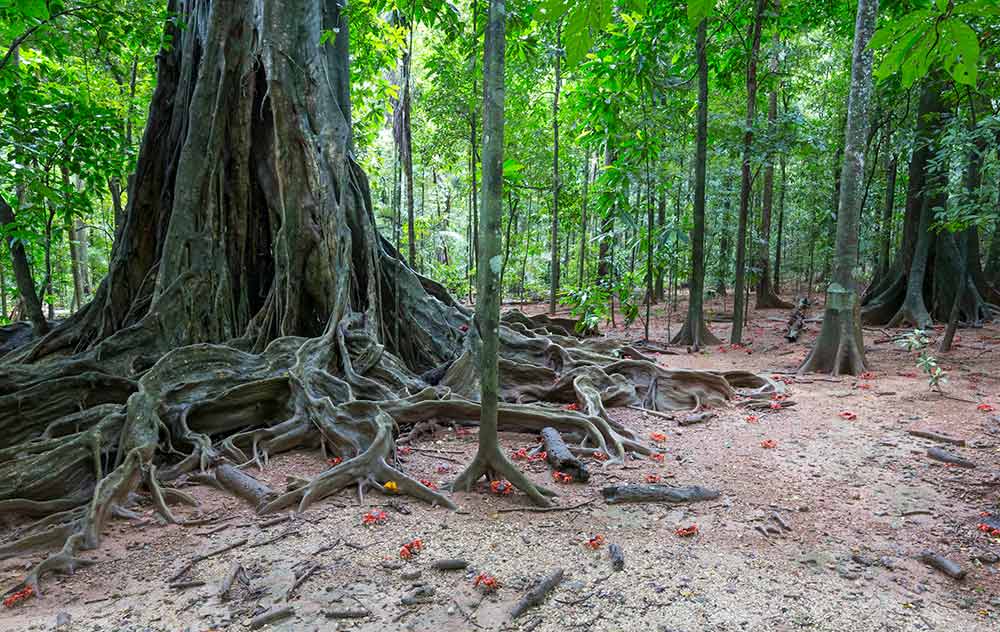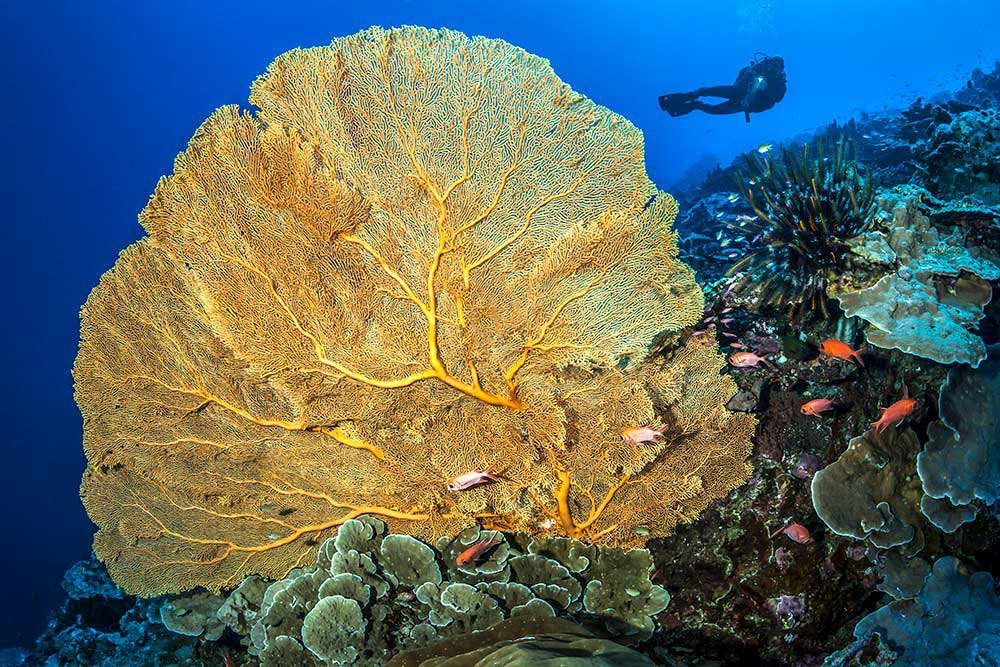Christmas Island is located at the peak of a volcanic basalt seamount, that rose 4,200 metres below the sea approximately 60 million years ago, with the island measuring approximately 19 kilometres (12 miles) in length by 15 kilometres (9 miles) in breadth. Geological uplifts every ten million years have created multi-levelled terraces around the island, providing an extraordinary ecosystem of terrestrial and avian fauna and flora. The island’s highest point is at Murray Hill, which lies 361 metres (1,184 feet) above sea level.
Caves
One of the most amazing geological features across Christmas Island are the spectacular underground cave systems, with several types evident including plateau caves, sea caves, fissure caves, collapse caves, and basalt caves. Much of the island’s rainfall accumulates underground due to the karst terrain, with water seeping through to spectacular caves and sinkholes.

Wetlands
A highlight on the western side of the island is the Dales, which has been designated as a Wetland of International Importance under the Ramsar Convention. This network of seven watercourses is characterised by incredible forests, gorges and streams that are sourced from underwater caves that flow into the ocean. Hosnie Springs is another wetland on the island, home to two species of mangrove.

Rainforests
Christmas Island’s is home to stunning Jurassic style rainforests, that grow in the deep soils of the island’s plateau and terraces. Canopies reaching over 40 metres in height provide perfect conditions for ferns, palms, lilies, spectacular orchids and vines to grow below. The island boasts over 135 plant species including 18 endemics. Across slopes and terraces with shallower soils, marginal rainforest with smaller and semi-deciduous tree species are found, with this being a prime habitat for red crabs, feeding beneath the canopy.

Coastline & Reefs
A coastline of near-continuous sea cliffs up to 20 metres high encircle the island, with 13 shallow bays and small beaches including Flying Fish Cove and Dolly Beach. Surrounded by beautiful coconut palms, this remote beach is also an important nesting area for marine turtles and a common location to see the giant Robber Crabs.
Fringing reefs around the island boast amazing fan and plate corals, with almost 90 species present, whilst 650 species have been recorded, with favourites including parrotfish, surgeonfish, wrasse and angelfish. Given that the island is positioned at the precipice of the Java Trench, the Indian Ocean’s deepest trench, there are incredible drop-offs for divers, many of which plummet down several kilometres.

